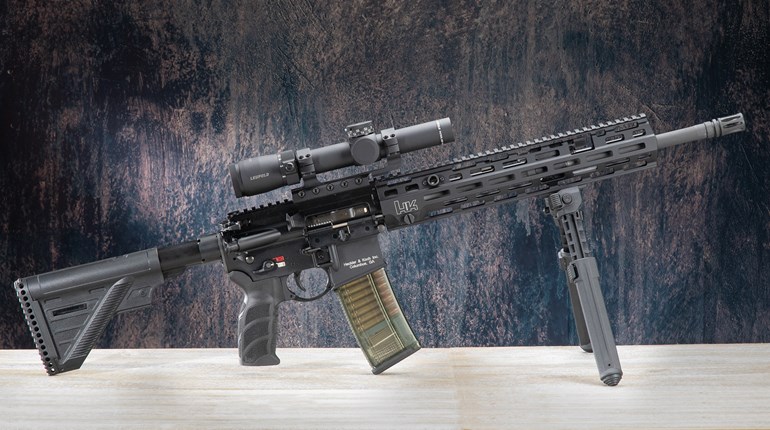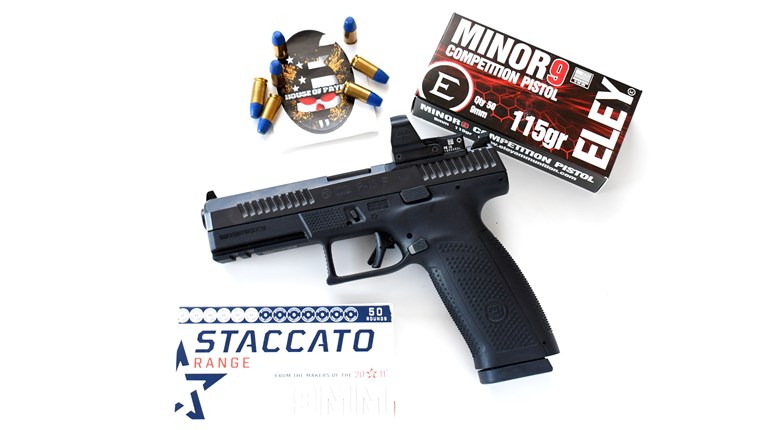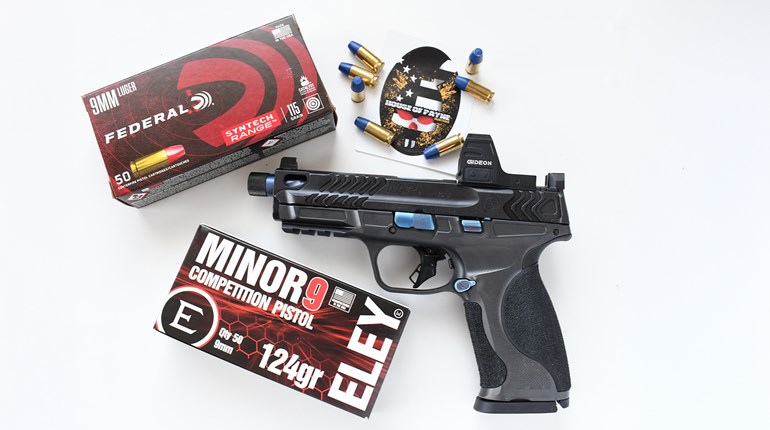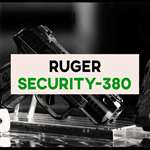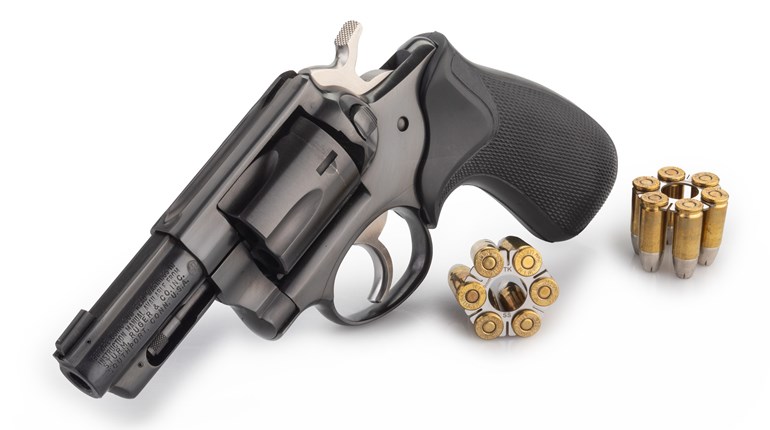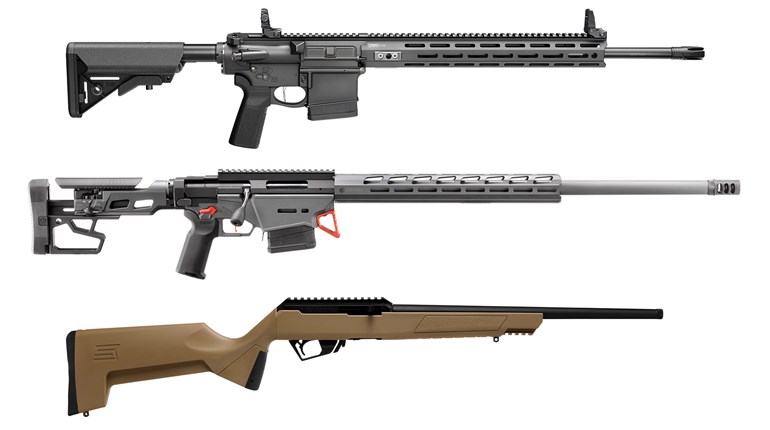
Gideon Optics has one of the most diverse lineups in the optics industry, and it seems as if the company keeps launching new models every quarter. If there’s two things I’ve noticed as a writer covering the outdoors and shooting world, it’s that pistol-mounted reflex optics have converged on what I’ve been calling the “Big Four” optics-mounting footprints. These are the Aimpoint ACRO, Leupold’s DeltaPoint Pro, Trijicon’s RMR footprint and Shield Sights’ RMSc. (Honorable mention goes out to the Holosun-K footprint, but it amounts to an RMSc without recoil posts on the rear).
My other observation is that the red-dot shooting public is clamoring for “big-window” sights. Trijicon’s SRO is notable in this category, and Holosun does brisk sales with the HS507 Comp.
Back to Gideon Optics. Capitalizing on what I described above, one of Gideon’s products 2025 launches is the Gideon Storm, a “big-window” competition style red-dot built around Leupold’s DeltaPoint Pro footprint. Gideon Optics already offers big-window sights that fit on RMR footprints. They even offer big-window enclosed-emitter options. By offering the DeltaPoint Pro Storm sight, Gideon is making sure not to neglect that portion of the market.
Gideon Storm Overview
 The Gideon Optics Storm is an open-emitter red-dot sight with a prominent, square viewing window. Like the rest of Gideon Optics’ red-dot sights, the Storm’s external housing is machined from 7075 aluminum and includes Gideon’s signature styling consisting of milled out recesses throughout the housing.
The Gideon Optics Storm is an open-emitter red-dot sight with a prominent, square viewing window. Like the rest of Gideon Optics’ red-dot sights, the Storm’s external housing is machined from 7075 aluminum and includes Gideon’s signature styling consisting of milled out recesses throughout the housing.
I appreciate that the sight’s housing has fairly thick “load-bearing” sides that culminate in angled corners on the top left and top right. These would help protect the top portion of the Storm from drops, falls or blows. Similarly, the Storm’s glass appears to be well-placed and embedded at such an angle that it is decently nestled from potential impacts. Due to their shapes, open-emitter sights don’t have the same level of structural rigidity as their enclosed-emitter counterparts. This makes it easy to appreciate an open-emitter design that takes measures to be as sturdy as possible.
Initially, I took this for granted, but the Gideon Storm has a low deck height compared to other optics which use the DeltaPoint Pro footprint, and Gideon even mills a basic rear sight notch on the rear so you can use your existing front sight.
Battery And Controls
The Storm uses a CR 1632 coin battery to power its emitter. The battery sits on a side-loading tray which can be accessed from the left side. This location is standard of a typical red-dot sight of today, but it’s also very sensible and helps “declutter” the overall layout of the sight.
Gideon also kept things simple by having two straightforward rubber-enclosed buttons on the left side. These are used to turn the optic on and off and control brightness levels. These controls are on the smaller side to ensure that they don’t bump against external objects and switch the user’s settings. Similarly, the elevation and windage dials are diminutive and require the use of a thin, flat tool to adjust. Even the rim of a 9mm case might be too thick.
6-MOA Reticle, 90 Minutes of Adjustment
It’s almost de rigueur for “big-window” competition-focused red-dot sights to use larger dots. Six-MOA seems to be the go to, though 5- or 8-MOA dots are not unheard of either. The Storm employs a 6-MOA dot, available in either red or green. In addition to the fact that a larger dot is easier to visually pick up and track, the bigger the dot, the crisper and rounder it presents to those with astigmatism issues, myself included. Looking through the Storm, it’s easy for me to see a near-perfect solid red circle every time.
Thanks to the Storm’s overall size (24mm x 21.5mm viewing window dimensions), it naturally includes a generous adjustment windage and elevation range of 90 MOA. A wider range is always more desirable because it allows for more flexibility between differing loads and zeros. While not as critical for handguns, this starts to matter more on revolvers and mounting a sight like the Storm to a medium or large-frame revolver wouldn’t be unreasonable.
Mounting The Gideon Optics Storm
 My Gideon Optics Storm specimen currently resides atop my Ruger RXM. Without going off-topic too much, the RXM is quite optics friendly, especially for anything that works with a Leupold DeltaPoint Pro or Trijicon RMR footprint. When mounted on the RXM slide, the Storm makes both the gun and the sight meld like peanut butter and jelly. The RXM’s iron sights and the Gideon Storm co-witness beautifully. It’s to the point where I’d need a very compelling reason to take the Storm off the RXM.
My Gideon Optics Storm specimen currently resides atop my Ruger RXM. Without going off-topic too much, the RXM is quite optics friendly, especially for anything that works with a Leupold DeltaPoint Pro or Trijicon RMR footprint. When mounted on the RXM slide, the Storm makes both the gun and the sight meld like peanut butter and jelly. The RXM’s iron sights and the Gideon Storm co-witness beautifully. It’s to the point where I’d need a very compelling reason to take the Storm off the RXM.
Thanks to its form factor, it rides like the typical open-emitter sight while still providing that larger viewport without the added clunkiness. This also means that despite being a big-window competition sight, the Storm’s actual profile doesn’t limit it to just that use. I’d also point out that the Storm doesn’t detract from concealment either. As someone with some level of astigmatism, I really appreciated the crisp 6-MOA dot and the fact that the Storm’s emitter is easily daylight bright.
Something that’s part and parcel to big-window red-dot sights is artifacts and off-angle reflections. It must be the Storm’s unique convex glass shape, but I didn’t experience much in the way of artifacts other than during very specific angles between the handgun and the sun over the horizon. The Storm’s window has a slight tinge of distortion, but nothing that’s unusual for a $230 red-dot, or more expensive brands for that matter.
The Takeaway
Likely due to the Trijicon’s SRO influence, most “big-window” red-dots gravitate to its RMR pattern footprint. At the same time, Leupold’s DeltaPoint Pro footprint pattern isn’t any less significant. Some major manufacturers even map their slides with the DeltaPoint Pro by default, and without delving into the weeds, one could argue that it has certain advantages over the RMR pattern. Regardless, with an MSRP of just $279.99, it’s mighty nice of Gideon Optics to offer a solid value option that couples to DeltaPoint Pro footprints.












